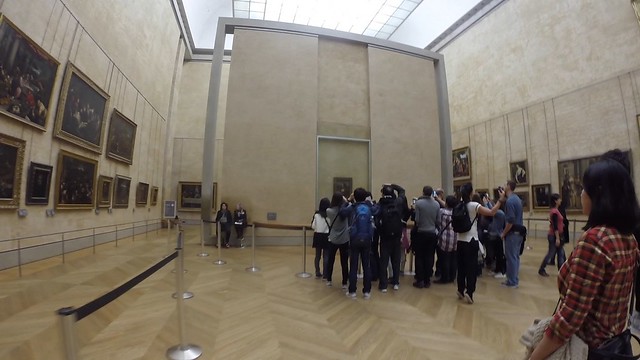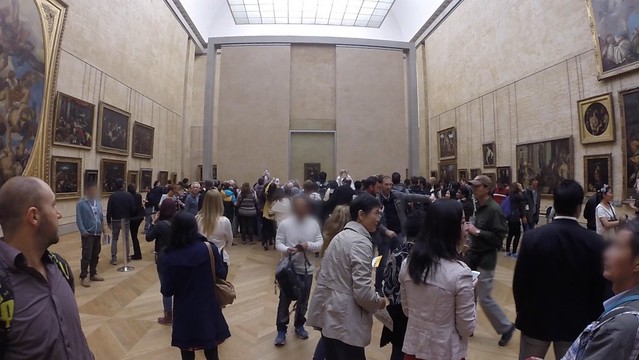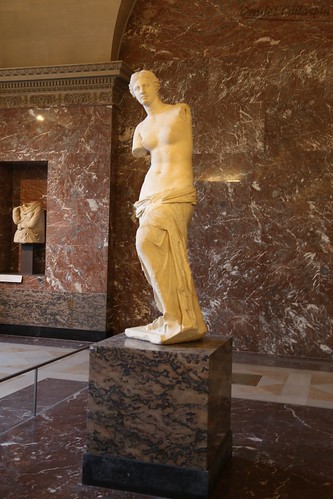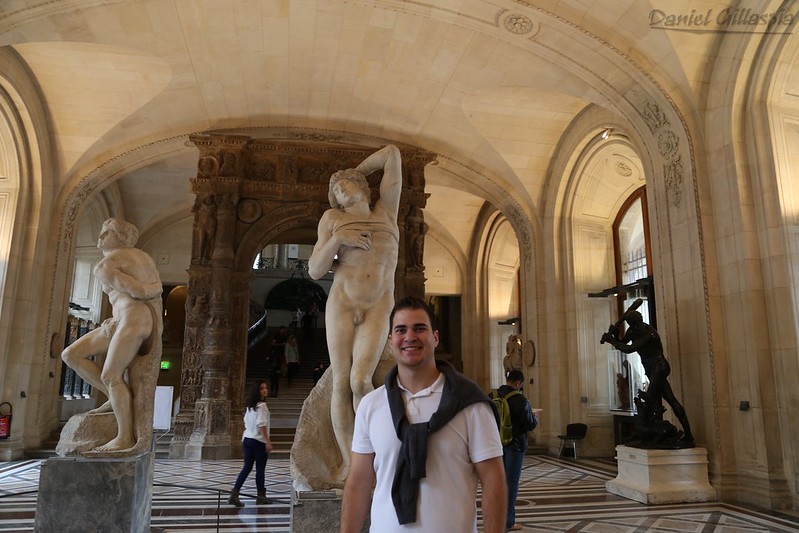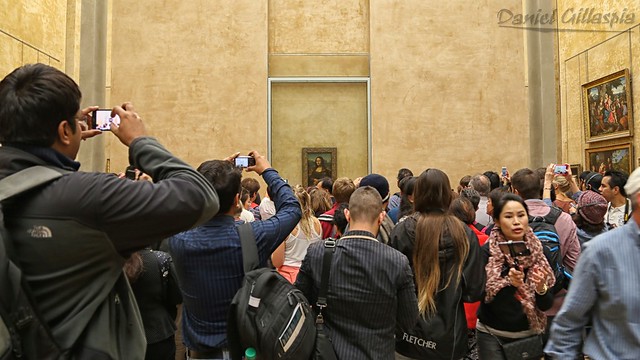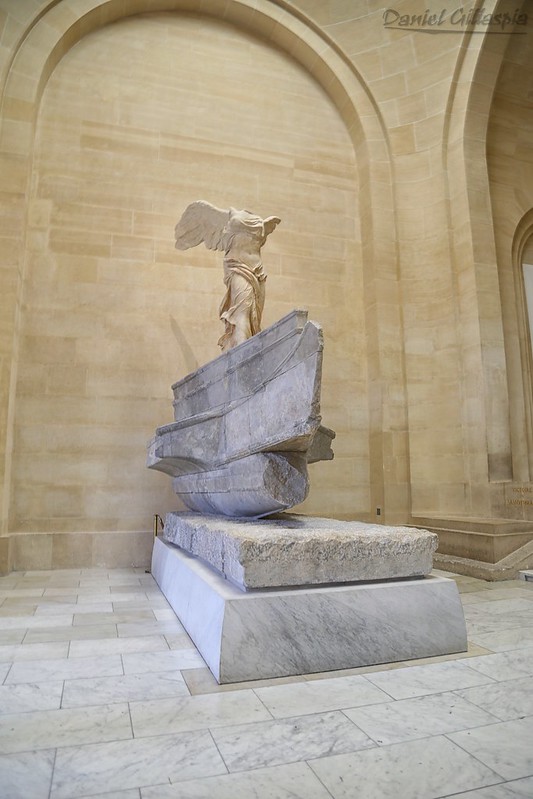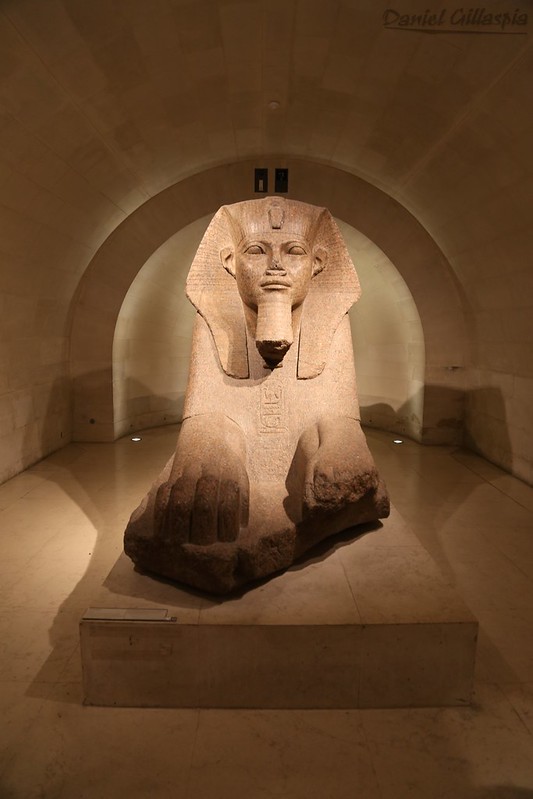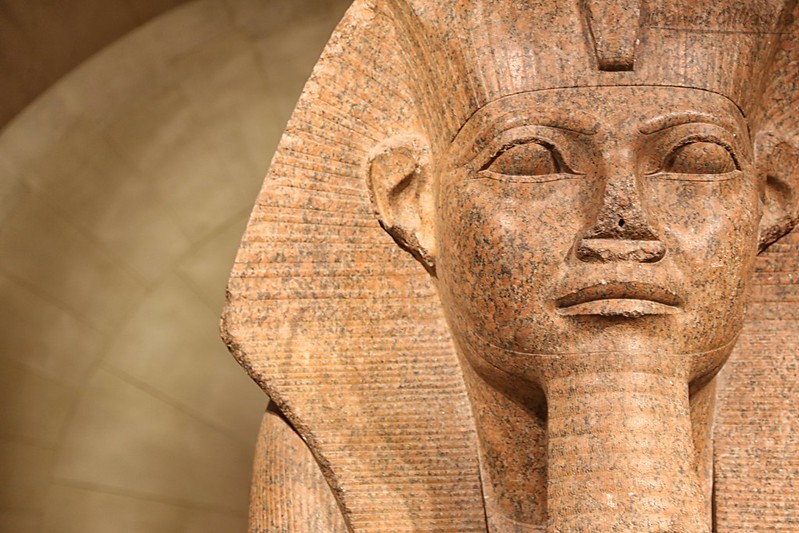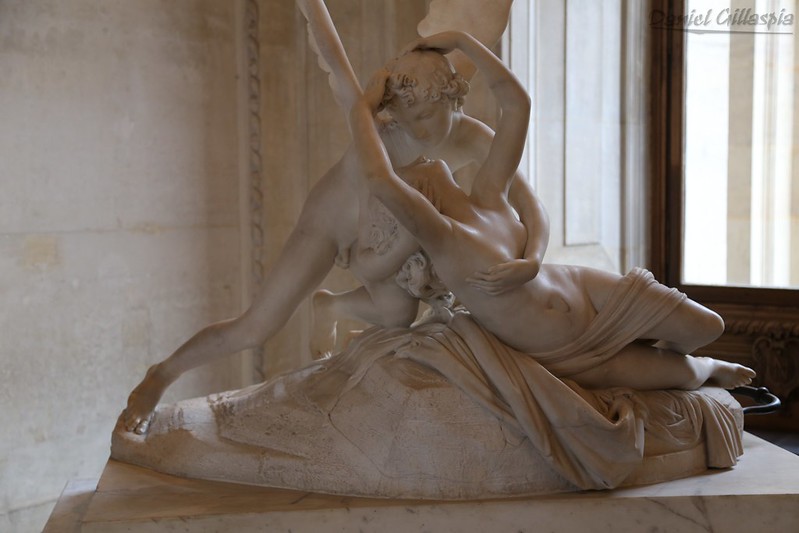Musée du Louvre, or “The Louvre,” is an absolute beast of a museum. It’s so vast and contains so many thousands of pieces of art and relics that there’s simply no way to see it all in a day. If you’re like most first-time visitors you’re probably there to see some of the most famous items on exhibition, especially the most famous painting in the world: “Portait de Monna Lisa.” That’s all fine and dandy, the only problem is that there are about 15,000 other people that will be visiting on any given day with the same mindset as you. This means that you need to formulate yourself a good plan to ensure that you beat the lines and are able to enjoy the exhibits you’ve likely anticipated seeing for months or perhaps even years.
Here are a few simple tips and bits of information for you take into consideration to ensure that you have a great visit to the Louvre Museum.
1. Prices
Basic admission for the permanent collections for adults is €12. Admission is free for those under 18 and for other who hold a certain status, such as 18-25 year-old residents of the EU.
From October to March, admission is free on the first Sunday of every month.
Most days the museum is open from 9am to 6pm; however, the hours fluctuate depending on the day of the week that you visit. Here’s the schedule of the hours for the Louvre.
2. Enter through the “secret side entrance” right at opening and see the Mona Lisa first
This is my number 1 tip for anybody visiting the Louvre. There are some pretty crazy lines that develop on the outside of the front entrance, especially on weekends. Lines that’ll force you to burn up valuable travelling time. For that reason, you want to plan on entering through the lesser-known “Porte des Lions” door. That entrance is located on the map below.
For whatever reason, this entrance isn’t known by many and the queue is never long at all. In fact, when I left around midday the line was completely non-existent while the line out of the main front pyramid seemed to go on for forever! The best part is that this is the closest entrance to the Mona Lisa. If you arrive about 15 minutes before the museum opens and enter through this entrance, you will be guaranteed a front row position at the Mona Lisa before it gets packed in there and trust me, that room becomes somewhat of a madhouse during peak times. And be aware that the signs are in French and they call the Mona Lisa “La Joconde.” The good news is that the Louvre knows not everyone knows French and they have photos with arrows pointing toward the main attractions posted throughout the museum.
Just make sure that the entrance you are attempting to go through actually says “Porte des Lions” on it because there is another entrance that I believe many others waiting outside the museum thought was the Lions entrance. If the doors don’t open right at opening time then you might be at the wrong place but do know that from time to time this entrance is not open for some reason. If you are concerned about whether or not Porte des Lions will be open then the museum recommends that you call them ahead of time just to be sure. Here is that number: +33 (0)1 40 20 53 17.
3. Grab a map
This goes without saying. Unless you are the Rain Man or his equivalent, you will need a map to get you around efficiently in this magnificent place. Luckily, they give out free maps of the museum as soon as you walk in and get past security. They have every language imaginable so you should be able to find whatever your native tongue is. Also, the maps are well-done and I thought they made it very easy to get around this giant museum.
4. Learn French… or invest in an audio guidebook
While I enjoyed the exhibits my ethnocentrism had kicked in before hand and I assumed that there would be English panels for me to read at all of the exhibits. Instead, it was all in French. If you really want to have to have a true museum experience then consider investing in an audio guidebook. There are two ways to do this. One option is to rent a Gameboy DS. And I’m not joking. They provide visitors with audiobooks loaded into a Nintendo 3DS. It’s pretty nifty and only costs €5. In addition to the audio commentary, it will also provide you with all the information you need for getting around the museum and you can use the guidebook at your own pace.
The second option is to buy the Louvre app. It’s available for both Android and iPhones. It only costs €1.79 and looks like a good alternative to the Nintendo DS. Like I said, I didn’t invest in either of these and wish that I had so perhaps you should give them a try upon your visit.
5. The Mona Lisa is quite small
I did a lot of research on the Louvre beforehand so this didn’t catch me by surprise but a lot of visitors seemed surprised (and almost a bit disappointed) at how small the Mona Lisa painting is in real life. While it is a bit small, I kind of thought that made it that much more interesting. The fact that one of the most timeless pieces of art and probably the most famous painting in the world is so small makes it that much more fascinating to admire in person.
If there was one thing I think receives somewhat of valid criticism, it’s the overall presentation of the Mona Lisa. There was something about that room and the overall scene where the Mona Lisa hangs behind bullet proof glass that just didn’t draw me into the world of Da Vinci like I was hoping. Everything in Paris is so grand and so immaculate and yet the Mona Lisa is kind of “just there.” My partner disagreed with me on this and thought the presentation, with Mona Lisa featured by itself on a the huge wall, actually did this larger-than-life painting justice. Regardless of what you think of the presentation though, I think everyone will agree that just seeing this painting in person is a worthwhile experience.
6. Rush to the major attractions first (if you want decent photos of some of them)
I recommend you doing this if one of you’re a passionate photographer and one of your primary concerns is getting great photographs of some of the exhibits without tons of people popping up in your photos. One could easily rush to the Mona Lisa and then to Venus de Milo and Winged Victory before the crowds develop and get some great photos. The Winged Victory offers an especially great photo opportunity as it is mounted atop a beautiful staircase area. If you get there early enough, you can capture that scene without flocks of tourists in it.
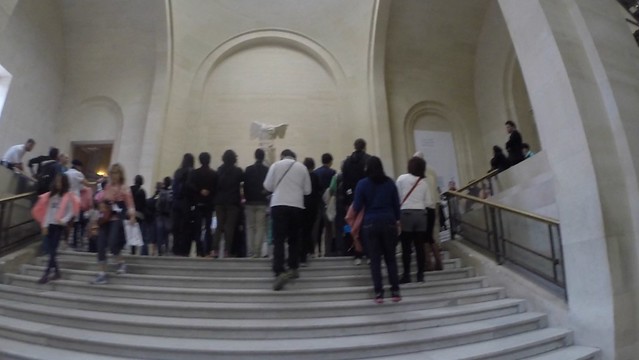
A typical crowd you will find at the Winged Victory. Try to visit it as soon as the museum opens to beat the crowds and get better photos.
Now I realize that rushing from exhibit to exhibit is no way to enjoy a museum. That’s why I suggest returning to the exhibits you rushed through to get your photos. Obviously, if getting these type of photographs isn’t a primary concern then you’ll want to just go ahead and get your stroll on from the get-go.
7. Enjoy the less famous (and less crowded) attractions
I really enjoyed all of the less famous attractions mostly because there were hardly any tourists at them. It was nice to get a break from the crowds and be able to breathe a little bit. And these less famous attractions are special in their own right. I really enjoyed the Egyptian, Roman, and Greek exhibits. In my opinion all of these exhibits are exceptionally well-done and offer a superb museum experience.
8. Prepare your legs and feet
This is mostly for those visitors who aren’t accustomed to tons of walking on a daily basis. Paris is definitely one city where wandering the streets and sidewalks by foot is worth your time and energy. So far out of all the places I’ve visited I think I walked the most in Paris. Part of that walking experience included the hours spend wandering throughout the Louvre. So my word of advice is just to be prepared for a lot of walking at the Louvre and in just in general when you visit Paris.
That’s all for the Louvre. I hope you found these tips helpful for your visit to the Louvre Museum and you enjoy your visit to Paris!



